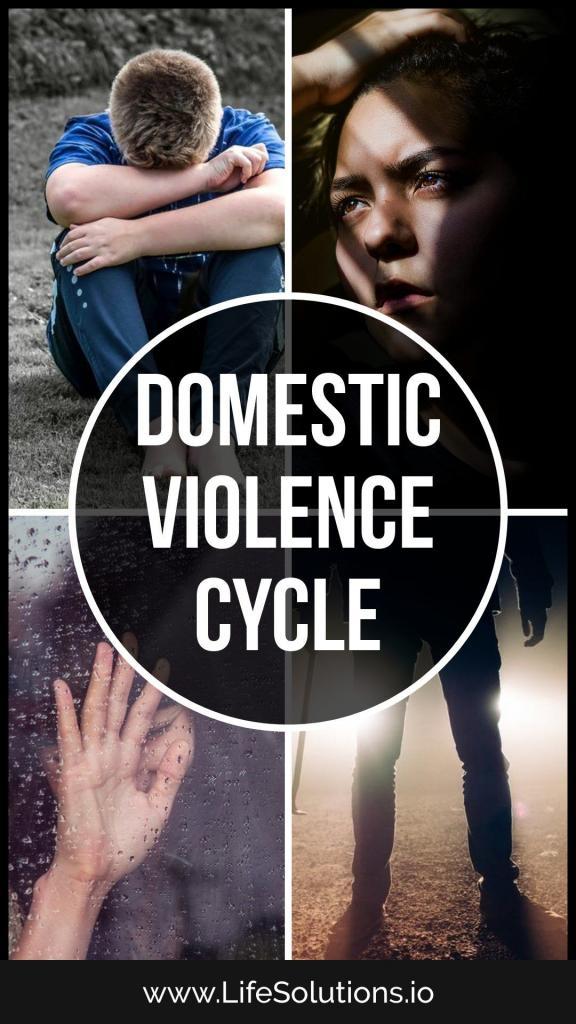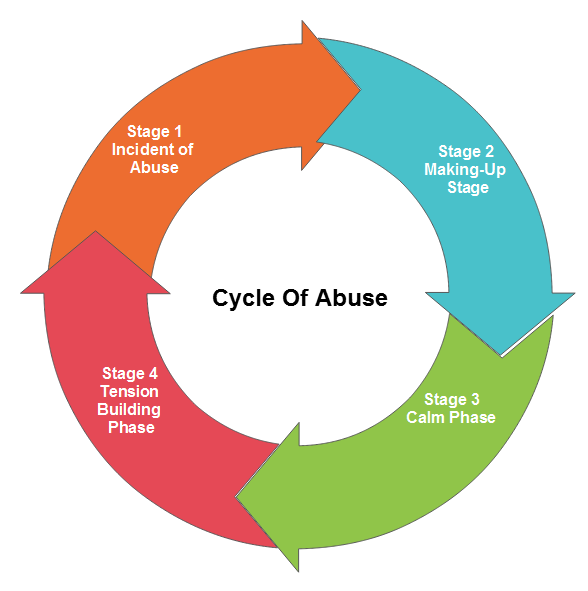Domestic Violence and Abuse Cycle

In order to keep the victim close and dependent, the perpetrator engages in what is called trauma bonding; a cycle of violence followed by apologies, expressions of love, promises of reform, and appeals to loyalty and compassion. This goes along with total isolation of the victim from information, material aid, or emotional support so that nothing can interfere with the perpetrator’s power and control.

Cycle of Violence and Abuse

1. iNCIDENT OF ABUSE
First the incident of physical, sexual, or emotional abuse takes place. During this time the abuser may fall into a dissociative state which is sometimes described as “red out.” Victims of cyclical abuse also tend to dissociates in order to hide while having a feeling of unbelief that it is truly happening to
2. MAKE-UP PHASE
Making-up Stage: During this stage the abuser will typically show some sort of remorse and may even apologize or make promises to change. On the flip side, the abuser may blame the victim for causing the abuse, or claim that the victim is exaggerating or lying (the abuse was not that bad or didn’t happen).
3. CALM PHASE
Calm Phase: During this phase the abuser may act as if the abuse never happened and the physical abuse may actually stop for a period of time. The abuser may keep soME promises and give gifts to the victim which may build false hope that the abuse will not happen again
4. TENSION BUILDING PHASE
Tension Building Phase: The abuser starts to get angry and the victim tries to appease by saying and doing all the right things. Communication starts to break down. At this point another abusive incident is likely to occur, which starts the whole cycle over again. am text block. Click edit button to change this text. Lorem ipsum dolor sit amet
PLEASE REACH OUT FOR HELP TODAY IF YOU ARE A SURVIVOR OF DOMESTIC VIOLENCE. CALL HELEEN AT 503-914-2749 OR REGISTER FOR THIS GROUP ONLINE


